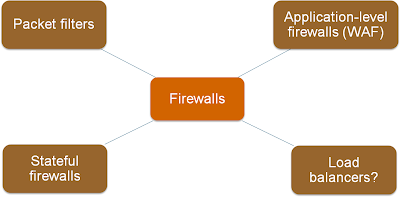Category: workshop
Interop Product Launch Craze
As expected, we’ve experienced a product launch craze just prior to Interop Las Vegas. I try to avoid marketing announcements, but the blogosphere exploded in hard-to-ignore posts ... and as always, it was great fun separating marketing fluff from reality. Here’s a grumpy take on the above-mentioned press releases.
TCP and HTTP Improvements
In previous videos from the TCP, HTTP and SPDY webinar I described the network-related performance challenges experienced by web applications and did a deep dive into TCP and HTTP mechanisms underlying them.
Today’s video describes numerous TCP and HTTP enhancements – from increased initial congestion window (recently published as RFC 6928) and TCP fast open to persistent HTTP sessions and pipelining.
Open vSwitch Under the Hood
Hatem Naguib claimed that “the NSX controller cluster is completely out-of-band, and never handles a data packet” when describing VMware NSX Network Virtualization architecture, preemptively avoiding the “flow-based forwarding doesn’t scale” arguments usually triggered by stupidities like this one.
Does that mean there’s no packet punting in the NSX/Open vSwitch world? Not so fast.
They want networking to be utility? Let’s do it!
I was talking about virtual firewalls for almost an hour at the Troopers13 conference, and the first question I got after the presentation was “who is going to manage the virtual firewalls? The networking team, the security team or the virtualization team?”
There’s the obvious “silos don’t work” answer and “DevOps/NetOps” buzzword bingo, but the real solution requires everyone involved to shift their perspective.
Virtual Firewall presentation from Troopers 13
The 45 minute virtual firewalls presentation I had at Troopers 13 is now available online. The virtual firewalls webinar is an in-depth 2,5 hour version that includes numerous product architectures.
You can get all my recent public presentations and a list of upcoming events on my web site.
TCP and HTTP deep(er) dive Q&A
The deep dive into TCP and HTTP mechanisms that impact web application performance triggered numerous questions during the live webinar session – it took me almost 10 minutes to answer them all.
TCP and HTTP deep(er) dive
In the first part of the TCP, HTTP and SPDY webinar I explained why TCP and HTTP impact the end-to-end web application performance. In the second section of the webinar, we did a deep dive into the actual TCP and HTTP mechanisms that increase end-to-end latency (3-way handshake, initial congestion window, request/response nature of HTTP).
VXLAN scalability challenges
VXLAN, one of the first MAC-over-IP (overlay) virtual networking solutions is definitely a major improvement over traditional VLAN-based virtual networking technologies … but not without its own scalability limitations.
VM BPDU spoofing attack works quite nicely in HA clusters
When I wrote the Virtual switches need BPDU guard blog post, I speculated that you could shut down a whole HA cluster with a single BPDU-generating VM ... and got a nice confirmation during the Troopers 13 conference – ERNW specialists successfully demonstrated the attack while testing the security aspects of a public cloud implementation for a major service provider.
For more information, read their blog post (they also have a nice presentation explaining how a VM can read ESXi hard drive with properly constructed VMDK file).
Compromised Security Zone = Game Over (Or Not?)
Kevin left a pretty valid comment to my Are you ready to change your security paradigm blog post:
I disagree that a compromised security zone is game over. Security is built in layers. Those host in a compromised security zone should be hardened, have complex authentication requirements to get in them, etc. Just because a compromised host in a security zone can get at additional ports on the other hosts doesn't mean an attacker will be more successful.
He’s right from the host-centric perspective (assuming you actually believe those other hosts are hardened), but once you own a server in a security zone you can start having fun with intra-subnet attacks.
464XLAT Explained
IETF recently published RFC 6877 (464XLAT) describing a dual-translation mechanism that allows an IPv6 host (or CPE) in an IPv6-only access network to pretend it still has IPv4 connectivity. Why would one need a kludge ingenious solution like this? In a word: Skype.
For more details, watch the video explaining the need for 464XLAT and two typical use cases: Android handset and a CPE device (example: SOHO router with 3G uplink).
Are you ready to change your security paradigm?
Most application stacks built today rely on decades-old security paradigm: individual components of the stack (web servers, app servers, database servers, authentication servers ...) are placed in different security zones implemented with separate physical devices, VLANs or some other virtual networking mechanism of your choice.
The security zones are then connected with one or more firewalls (when I was young we used routers with packet filters), resulting in a crunchy edge with squishy core architecture.
Why TCP and HTTP affect web application performance
In the ideal world, you’d get a new web page within 100 milliseconds of clicking an active web page component (link, button ...). Reality is way harsher – sometimes it takes seconds till you can enjoy a web page served from a well-behaved web server (let’s pretend there are no server performance issues).
In the first part of my TCP, HTTP and SPDY webinar I explained how the transport mechanisms (TCP and HTTP) impact the end-to-end web application performance and what you could do to reduce the web page loading time.
The Spectrum of Firewall Statefulness
One of the first slides I created for the Virtual Firewalls webinar explained various categories of traffic filters, from stateless (and fast) packet filters to application-level firewalls.
As always, the real life is not black-and-white; I found a whole spectrum of products in the wild.
ProgrammableFlow Configuration Interfaces
Like every recently designed fabric configuration/management platform, NEC ProgrammableFlow controller supports numerous configuration interfaces, including CLI, GUI, web-based configuration, REST API and OpenStack plugin. For more details, watch this part of the ProgrammableFlow Technical Deep Dive webinar.

